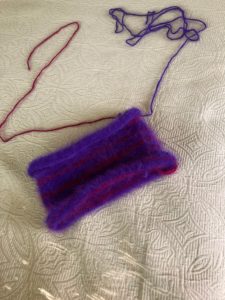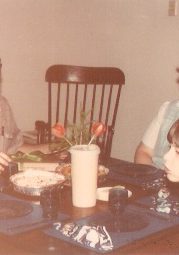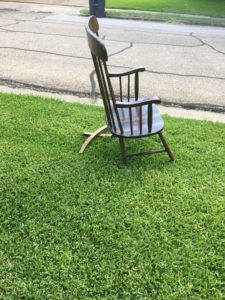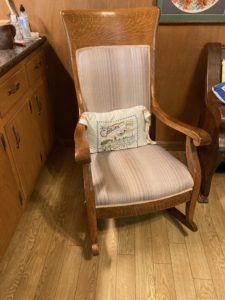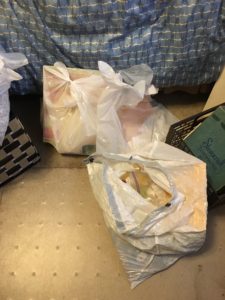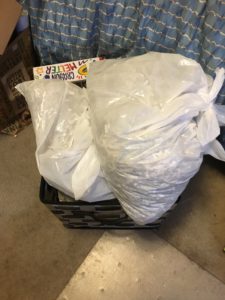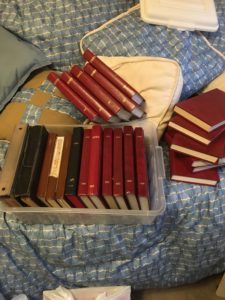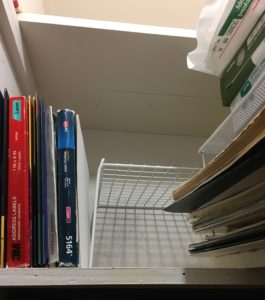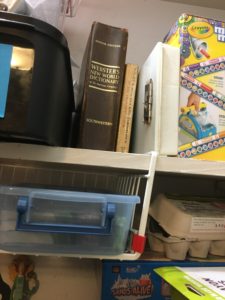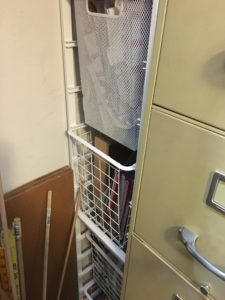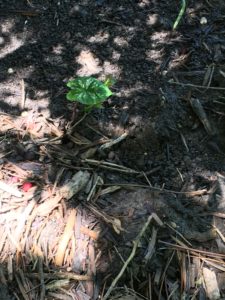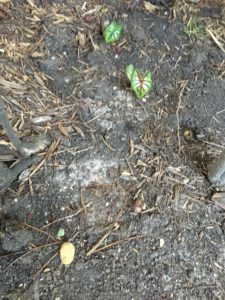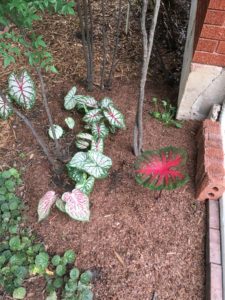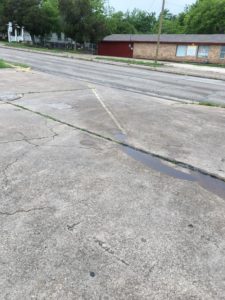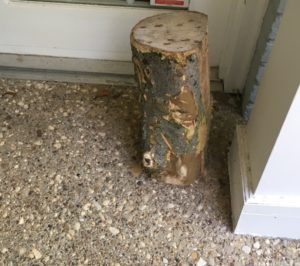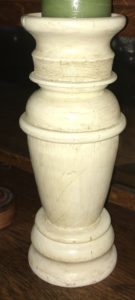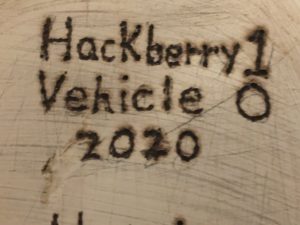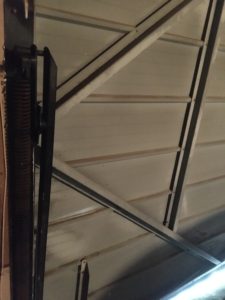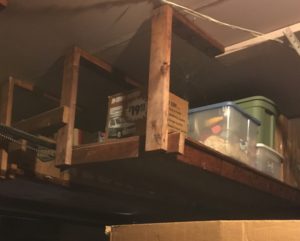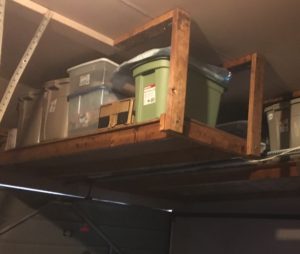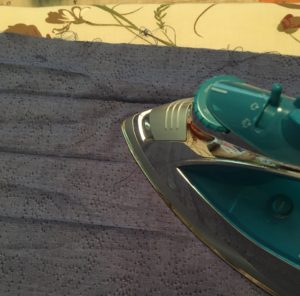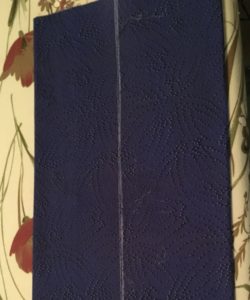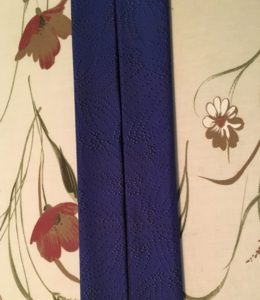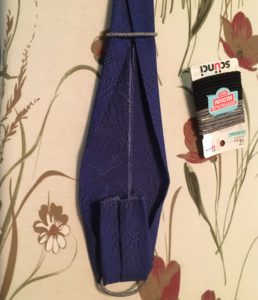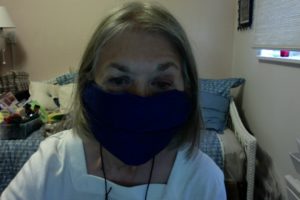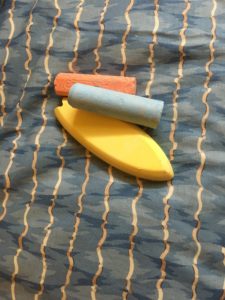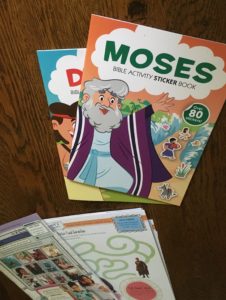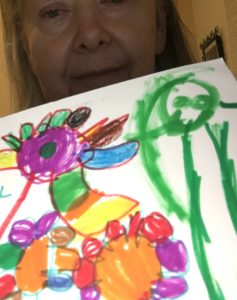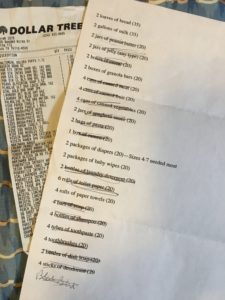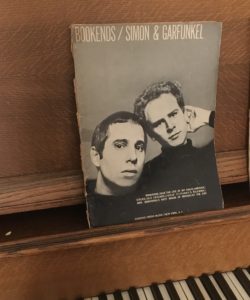I’ve mentioned before (a couple of years ago) about the amount of yarn that I got when David’s mother passed away. She was quite a yarn shopper and yarn hoarder. And also quite a knitter.
Over several weeks time, I took bags of yarn to my knitting group until almost all of it was carried away by delighted knitters and crocheters. I did keep a little bit of it for myself. I have several skeins of beautiful green that I cannot decide, still, what to do with. And there’s some blue I like. And, there’s some purple.
A friend of mine really likes purple and I thought I’d make a cowl for her. I had two kinds of purple yarn. One was lovely and soft and wool, and, therefore, a little itchy. When I held it up to my cheek, it was rather uncomfortable. It went into the Goodwill bag. The other one was just as soft and just as beautiful, but was acrylic and not at all itchy, so that’s the one I went with.
I found a pattern that I liked in one of my knitting books. I checked the suggested needle size and, of course, didn’t have the right one and had to go buy one. But, now, if I get another beautiful piece of yarn, I can make a cozy cowl for someone else. Or for me.
The nice thing about knitting is that I can sit around watching movies or television programs and not feel like I’m wasting time. I’m knitting!! I’m making a gift! The pattern is easy, and, since it’s a cowl, it’s just pretty much knitting around and around and around, without having to think, the way one has to if they’re making a sweater, for example. Those things have necks and armholes and you have to make sleeves, too, and, really, a cowl seems like the way to go.
I knitted my way through Hamilton and, yesterday, I discovered a movie, Downfall, about the last days of the Third Reich. I thought that sounded like something that would be interesting while I was trying to knit my way through to the end of the cowl. I started the movie and discovered, to my dismay, that everyone is actually speaking German. Yes, German. Which meant subtitles. Fortunately, I was just knitting around in a circle, and I managed. Except that I became more and more infuriated by those Nazis. But, I did finish the knitting.
- There was a lot of the purple and some of the berry. It’s mostly purple, but with a few small berry stripes. And here’s how close I came to “just right.” The trails of yarn are what’s left of each of those colors.
- And here’s what a cowl looks like when it’s actually around a neck. Nice and cozy.
I did have to weave in some ends, as there were two small skeins of the purple, and so I had to weave in the ends of those and the beginning and end of the berry stripes. But, now, TA-DAH, I’m done. It’s all ready to pack up and mail off to my friend. It will be a few months until the weather’s chilly enough to need to wear it. Maybe she’ll send me a photo of herself on a blustery, cowl-wearing day!
During the night, Paul had a vision of someone from Macedonia who was standing there and begging him, “Come over to Macedonia and help us!” After Paul had seen the vision, we began looking for a way to go to Macedonia. We were sure that God had called us to preach the good news there. We sailed straight from Troas to Samothrace, and the next day we arrived in Neapolis. From there we went to Philippi, which is a Roman colony in the first district of Macedonia. We spent several days in Philippi. Then on the Sabbath we went outside the city gate to a place by the river, where we thought there would be a Jewish meeting place for prayer. We sat down and talked with the women who came. One of them was Lydia, who was from the city of Thyatira and sold expensive purple cloth. She was a worshiper of the Lord God, and he made her willing to accept what Paul was saying. Then after she and her family were baptized, she kept on begging us, “If you think I really do have faith in the Lord, come stay in my home.” Finally, we accepted her invitation.
Acts 16:12-15 (Contemporary English Version)
From the History web site:
“The reason for purple’s regal reputation comes down to a simple case of supply and demand. For centuries, the purple dye trade was centered in the ancient Phoenician city of Tyre in modern day Lebanon. The Phoenicians’ “Tyrian purple” came from a species of sea snail now known as Bolinus brandaris, and it was so exceedingly rare that it became worth its weight in gold. To harvest it, dye-makers had to crack open the snail’s shell, extract a purple-producing mucus and expose it to sunlight for a precise amount of time. It took as many as 250,000 mollusks to yield just one ounce of usable dye, but the result was a vibrant and long-lasting shade of purple.
The royal class’ purple monopoly finally waned after the fall of the Byzantine empire in the 15th century, but the color didn’t become more widely available until the 1850s, when the first synthetic dyes hit the market.”
So, these days, we’re saving the lives of those little snails. And possibly, we should be spending more time down at the river. Who knows who might turn up.


